
40 minute read
Spreading awareness on gender issues on International Women’s Day
Team girl power projecT
Aone-day training/ orientation program was organised on International Women’s day for 20 partner CSOs from 10 districts, orienting them on the Girl Power Project and briefing about the importance of soft skills in entrepreneurship. A total of 40 participants were present in the programme. The discussion started with the role of women in different trades and services & how the project visions to empower women as entrepreneurs. Three stages of the project were described which would lead to meeting the larger goal of the project; identification of CSOs and skilling them to meet the requirements, marketing of products manufactured by entrepreneurs, and their linkage with government & financial schemes. The project aims at the sustainability approach, wherein systems have been developed and are in a place to support women entrepreneurs. During the training, best practices were shared by some of the CSO partners on the work they have been doing. Usha Devi of Jharkhand Mahila Uthaan shared how they saw an opportunity during COVID-19 lockdown to start their social enterprise of making sanitary pads and how the enterprise is running successfully at present. Anita Hembram, Director of Caring and Sharing Foundation, East Singbhum shared on how mushroom was identified as a potential product. She continued to mention the market study that led to the identified the value chain of the product, where it was seen that at regional level the demand is very high but with the large distance to the market it was difficult to market it. Therefore, aggregation centres were opened at village level; a model was developed and was implemented in other villages too. As a result, a mushroom cluster is created which has impacted the income of the households. Girl Power carried out a baseline study of 5000 women to assess the livelihoods of the 10 districts of Jharkhand. The study also aimed to identify and explore the availability of raw materials, potential for entrepreneurship, current entrepreneurial activities & market access and environmental sustainability. The data collection was conducted during November 2020 to March 2021. Training for baseline survey was conducted in three districts of Jharkhand: Dumka, Deoghar & Saraikela. For collection of data, the KoBo Collect software has been used. Training was conducted before baseline study on how to collect data through KoBo Collect. A total 24 community resource persons were trained on app-based baseline
Advertisement
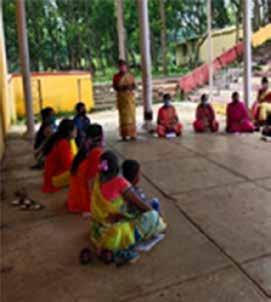
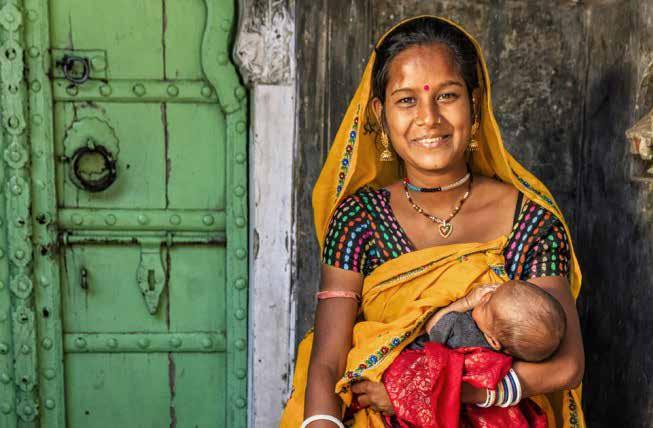
data collection, KoBo Collect. Similar training has also been conducted in seven districts. So far 121 CRPs have basis of following parameters: ♦ Presence of marginalized groups ♦ Equally dispersed across the major zones of the state ♦ Presence of supporting institutions ♦ Market Networks ♦ Women Entrepreneurs ♦ Strong grassroots institutions For collection of data, KoBo Collect software has been used. KoBoCollect is an Android app that is used in surveybased data gathering. It supports a wide range of question and answers types, and is designed to work well without network connectivity. KoBo Collect renders forms into a sequence of input prompts. Users work through the prompts and can save the submission at any point. Finalized submissions can be sent to a server. Collect supports location, audio, images, video, barcodes, signatures, multiple-choice, free text, and numeric answers.
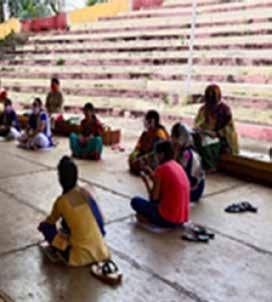
been trained, who are now familiar with data collection, using mobile app-based technology. Training program was conducted in each block where the importance of data collection, use of technology in data collection was focused upon. One day practical was also organised for the field staff to get acquainted with the new technology for data collection. Orientation on questionnaire was given to Community Resource Persons who are engaged for collection of data. Importance of each question was discussed. The baseline survey was carried out with 5000 women in 10 districts of Jharkhand covering 20 blocks in all zones. There are four divisons in the state of Jharkhand namely North Chotanagpur, South Chotanagpur, Kolhan& Santhal Pargana. The districts have been finalized on the
9 of the 10 most polluted cities in the world are in India: Report
NEW DELHI: World Air Quality Report 2020 was globally released by IQAir, a Swiss organisation. The report found 22 of the world’s most polluted cities to be in India. According to its findings, 84 per cent of all monitored countries observed improvements in air quality in 2020, as the report revealed the impact of COVID-19 lockdown and behavioural changes on global particulate pollution (PM2.5) levels. The report, presenting the ranking of cities across the globe from among 106 countries, is based on data of concentration of PM2.5, which has been measured by groundbased monitoring stations, most of which are operated by the respective government agencies.
Ghaziabad, a city in Uttar Pradesh and a part of the National Capital Region, is the second most polluted city in the world after Xinjiang (specifically Hotan region) in China. The report said that the high levels of air pollution in Delhi are a matter of concern. Although Delhi’s air quality experienced improvement by nearly 15 per cent from 2019 to 2020, the report stated, the city still ranked as the 10th most polluted city and the most polluted capital in the world.
According to the analysis, some of the major sources of India’s air pollution are transportation, biomass burning for cooking, electricity generation, industry, construction, waste burning and episodic agricultural burning.
The report established that the transportation sector has come out as one of the major contributors to India’s leading PM2.5 emission sources across cities. Besides Delhi and Ghaziabad, other cities in the top 10 polluted cities are Bulandshahar, Bisrakh Jalalpur, Noida, Greater Noida, Kanpur, Lucknow, and Bhiwari. Noticeably, eight of these nine cities are from the state of Uttar Pradesh. Faridabad, Jind, Hisar, Fatehabad, Bandhwari, Gurugram, Yamunanagar, Rohtak, and Dharuhera in Haryana; Muzaffarpur in Bihar; and Meerut, Agra, and Muzaffarnagar in Uttar Pradesh are the other cities included in the top 30 cities. Notably, 35 of the world’s 50 most polluted cities in 2020 in the report have also been found to be from India.
Avinash Chanchal, Climate Campaigner at Greenpeace India, attempted to put the global IQAir report in the Indian context and said that the health and economic costs of air pollution in India remain severe, even when many Indian cities recorded marginal improvements in air quality due to lockdowns. In February 2021, an analysis of IQAir data prepared by Greenpeace Southeast Asia said that air pollution caused by hazardous PM2.5 led to the death of 54,000 people last year in Delhi, where pollution levels remained almost six times above the prescribed WHO limits.
He said it would be pertinent for governments to prioritise sustainable and clean energy sources and for the cities to encourage low cost, active and carbon-neutral mobility choices such as walking, cycling, and accessible public transport. Chanchal further added that speeding up the transition to clean energy and clean transportation in India will save lives and dramatically reduce healthcare-related costs.
Frank Hammes, Chief Executive Officer, IQAir, at the release of the report, commented that the year 2020 brought an unexpected dip in air pollution but added that in 2021, the world would likely see an increase in air pollution due to resuming human activities, again.
With this report, the organisation is hoping to highlight the need for urgent action to combat air pollution, which currently remains the world’s greatest environmental health threat.
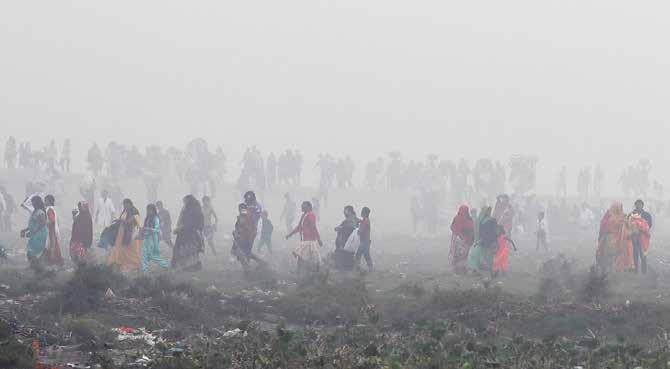
Urgent need to tackle data inequality World Development Report 2021
NEW DELHI: The ‘World Development Report 2021: Data for Better Lives’ was released by the World Bank and highlighted the tremendous potential lying in the changing data landscape to improve the lives of poor people, and simultaneously noted its potential to open back doors that can harm individuals, businesses, and societies.
David Malpass, President of the World Bank Group, said that the perspective of poor people has largely been absent from the global debate on data governance, and therefore it urgently needs to be heard. A lack of institutions, financial resources, and decision-making autonomy in lowincome countries, he believes, “hold back…the effective implementation and effectiveness of data systems and governance systems.”
The report notes how the COVID-19 pandemic has underscored opportunities and challenges associated with data use and thus how urgent it is to provide equitable access to data and to improve data governance to citizens around the world. It observed that shifts to virtual work during the worldwide lockdowns had illustrated the digital divide between those with and without access to technology, thereby putting light on the challenges related to inequitable access to mobile phones and the internet for people in poor and low-income countries.
The report, in particular, proposes international engagement on World Trade Organisation arrangements for trade in data-enabled services, reform of international taxation rights for datadriven businesses, regional collaboration on the development of data infrastructure, bilateral cooperation on law enforcement and antitrust regulation.

DDA approves new parking norms
NEW DELHI: The Delhi Development Authority (DDA), on March 18, approved the parking norms to rationalise the existing parking provisions to resolve the growing parking problem in the Capital. The policy was finalised in a meeting chaired by Delhi Lieutenant Governor Anil Baijal. He approved other proposals such as TransitOriented Development and set up a committee to monitor the restoration of the Yamuna floodplain.
The parking policy, which will be public for people soon, suggests that the parking space in residential areas is based on the size and number of dwelling units on a plot rather than the total built-up area. The officials from DDA said that it would help reduce the congestion on roads, as these roads have been turned into parking spaces by the residents. An official from DDA said that presently, the parking norms are based on the designated use premise, and it is observed that the surplus vehicles from these buildings are spilt on the roads, which result in increased congestion in public spaces. He added that there is a need to rationalise the parking norms to address the parking problem, especially in residential areas. In government housing, the norms for (General Pool Residential Accommodation) GPRA colonies will be adopted. In the case of banquet halls, parking norms will be decided keeping in view the orders of the National Green Tribunal (NGT). In government hospitals and offices, the parking norms will be based on actual usage, the DDA official added.
Over 67.5 lakh people brought back under VBM
The Government of India has stated that over 67.5 lakh people have been brought back from overseas as part of the Vande Bharat Mission (VBM) so far. India started one of the world’s largest relocation operations from May 7, 2020, to bring back marooned Indians from foreign countries. In the beginning, Air India, and its ancillary Air India Express, played a major part in the operations. Subsequently, other air carriers were permitted to take part in the programme. In addition, ships were also used to bring back Indian citizens.
New Nagar Van Scheme will aid in setting up urban forests: Javadekar
Prakash Javadekar, Minister of Environment, Forest and Climate Change, Government of India, said that the new Nagar Van Scheme will assist in building of urban forests in cities. Javadekar, in a message on the occasion of the International Day of Forests on March 21, said that the scheme will also fill the gap between cities and villages in terms of having their own forest cover. Under the Nagar Van Scheme, urban forests will be developed in 200 cities in its first phase. Nagar Van Scheme, or Urban Forest Scheme, was launched by Javadekar on June 5, 2020, on the occasion of World Environment Day.
India ranks 139, Finland tops the World Happiness Report 2021
NEW DELHI: The World Happiness Report 2021 was published by the United Nations Sustainable Development Solutions Network (UNSDSN) on March 19. Although India displayed a slight improvement in the ranking, it is part of the ten lowestranking countries in the Happiness Index, ranking 139 out of 149 countries assessed. Of the top ten countries in the Index, nine were from the continent of Europe. Finland, securing the first rank, was followed by Denmark, Switzerland, Iceland, the Netherlands, Norway, Sweden, Luxembourg, New Zealand and Austria.
The report relies on the Gallup World Poll, an annual survey that started in 2005 and is conducted in more than 160 countries covering 99 per cent of the world’s population. It includes at least 1000 observations per country per year, covering both urban and rural areas, aiming to oversample major cities. The survey is nationally representative of the resident population aged 15 and above in each country. The World Happiness Report evaluates happiness levels among citizens from different countries by taking into account factors such as Gross Domestic Product, social support, personal freedom, and levels of corruption in each nation. This year, however, authors from UNSDSN addressed a new issue during the analysis for the report — the ongoing COVID-19 pandemic and its devastating impact on nations around the world. As a new addition, this year’s report provided two different sets of rankings — one list was based on the average of three years of surveys taken between 2018 and 2020 by Gallup, while another focused solely on the year 2020 to understand how COVID impacted subjective wellbeing.
The report this year provided insight into how people are happier in societies where there is a high degree of trust between people. One way we know this is from a hypothetical ‘benevolence’ question included in the World Happiness Report. A large body of research suggests that having a strong ‘sense of purpose’ is vital to our psychological wellbeing. The researchers noted in the report that the life satisfaction of employed people was approximately 1.2 points higher on the 0 to 10 life satisfaction scale. Furthermore, employment was one of the strongest determinants of life satisfaction during the pandemic. In some cases, countries that were more effective in keeping their citizens working, especially their low-skilled workers, showed more psychological resilience through the pandemic.
Jeffrey Sachs, one of the authors of the report, said that the World Happiness Report 2021 reminds everyone that the world must focus on wellbeing rather than mere wealth, which will be fleeting indeed if the governments do not do a much better job of addressing the challenges of sustainable development. According to the authors of the Index, trust was the key factor used to measure happiness in each country; nations where citizens had more faith vested in its institutions and had greater income equality, were considered to be more successful in combating the pandemic. Jeffrey further said that the findings reflect that the people have not thrown up their hands about their lives because of all the tumult caused in 2020. Sonja Lyubomirsky, a psychology professor at the University of California, mentioning the latest report, commented that the world saw the most massive changes in social behaviour it has ever seen in a long time. So she expected much, much more significant declines in wellbeing. But, she said that it was not the case according to the Index, which indicates how adaptive and optimistic the future is.

Artists use paintings to spread awareness about COVID
TO ACKNOWLEDGE HEALTH CARE and frontline workers’ role in combating the pandemic, graffiti artists painted walls in Mumbai with various COVID artworks. Some artists chose to reinterpret classic Renaissance and modern painters in the context of COVID-19. Some artists even depicted the Statue of Liberty and Marilyn Monroe donning the COVID appearance to spread awareness on the importance of following COVID appropriate behaviour all the time.

Bareilly Mayor elected as President of UP Mayors Association
Dr Umesh Gautam, Mayor, Bareilly, has been unanimously elected as the President of Mayors Association of Uttar Pradesh (UP). 17 Mayors took part in the elections which were held in Lucknow on March 16. The session was inaugurated by Dinesh Sharma, Deputy Chief Minister (CM) of UP. Dr Umesh Gautam was announced as the President of Mayors Association in the next session of the event. He met CM Yogi Adityanath and Deputy CM Dinesh Sharma after the session. The discussion in the meeting was held on the issue of extending more powers and responsibilities to Mayors.
Delhi HC suggests lanes for emergency vehicles
Delhi High Court suggested authorities to consider a plea seeking a reserved lane for unrestricted travel of emergency vehicles round the clock. A bench of Chief Justice D N Patel and Justice Jasmeet Singh said that some policy formulation is required in this and the Court has no reason to direct the authorities. The plea also seeks the Court to direct the Delhi Police to ensure immediate implementation and enforcement of the law, and to also direct the Delhi Disaster Management Authority to provide required support and infrastructure for the implementation of the dedicated reserved lanes.
France supports Kochi’s sustainable development initiatives
KOCHI: Lisie Talbot Barre, the Consul Generale of France, after meeting with M Anilkumar, Mayor of Kochi, said that more technical and financial help would be provided for sustainable development and cultural projects that the Kochi Corporation is implementing. The Consul Generale promised help in implementing an environmentfriendly mobility project for the city along with offering technical assistance to deal with plastic waste. She stated that sustainable urban transport projects will be a focus area.
The Alliance Francaise in Thiruvananthapuram is all set to collaborate with Arts Space Kochi, a corporation to promote art in public spaces in the city. Under this collaboration, cultural projects and events that the Alliance Francaise organises will be extended to Kochi, including art- and film-related events. A plan for partnership between educational institutions here and in France is also under discussion to promote exchange programmes between students in schools and colleges.
The Kochi corporation is currently working on the north-south railway corridor project in the city with help from the French Development Agency (AFD). This corridor between the North and South railway stations has been designed to be pedestrianfriendly and is expected to facilitate non-motorised transport. The significance of integrating the various modes of transport in Kochi and rationalising bus routes was also discussed at the meeting. Anilkumar informed that some of these projects are likely to make head way before the Urban Mobility India conference takes off in Kochi in October this year.
ITC partners with Karnataka govt for watershed development
BENGALURU: The diversified conglomerate ITC Ltd is partnering with the Government of Karnataka to execute a watershed development programme, which will be covering over one million acres and 100 watersheds in the state. A memorandum of understanding has been signed between ITC’s social investments programme Mission Sunehra Kal and the Karnataka Watershed Development Department this month.
According to the agreement, ITC will create a council of experts, which will train the team from the Karnataka government for the application of the company’s drought-proofing framework for planning, implementation, and monitoring of the programme. An official statement from ITC said that the agreement comes as a part of the state government’s ‘Watershed development for drought proofing’ programme, which aims at covering 1.16 million acres of watershed area in 29 districts.
Ashesh Ambasta, Executive Vice President and Head, Social Investments, ITC, said that it is a matter of immense satisfaction for the company to be able to partner with the Government of Karnataka, and said, “We are delighted to be able to support the government in its laudable endeavour to tackle water stress.”
Venkatesh MV, Commissioner, Watershed Development Department, Government of Karnataka, said that training sessions by ITC on droughtproofing will be a major support for the programme’s implementation and would make this a unique public-private partnership in the state for watershed development.
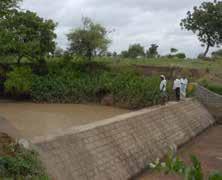
IIT-D develops EV charging station with inbuilt solar capability
NEW DELHI: Researchers at the Indian Institute of Technology, New Delhi, have developed an environmentfriendly and scalable smart Electric Vehicle (EV) charging station. The innovation has been modularised in a way to have inbuilt solar photovoltaic interface capability. This multifunctional charging station is an outcome of the ‘Demonstration of Grid Supportive EV charger and Charging Infrastructure at LT Level (D-EVCI)’ project, which is funded by the Department of Science and Technology (DST), Government of India, to save energy and reduce pollution
The 20 kilowatt (kW) smart charging station is a multi-functional charger capable of charging a wide range of EVs like cars, two- and threewheelers. Professor Sukumar Mishra, Department of Electrical Engineering, IIT Delhi, said that the scalable multifunctional charger had been designed keeping in mind the increasing demand from both the automobile industry and EV charger operators for ease of scalability in their charging units. Mishra, who is acting as the Principal Investigator of the project, also mentioned that the built-in modularity of the developed charging platform would allow charge operators to scale up basic requirements with minimal expenses.
Explaining the innovation, Mishra added that it also has a solar interface, which works in tandem with the electrical grid for energy sharing and said that in future, “the capacity of the solar panels can be increased and a totally green EV charger can be built that can act as an independent unit not taking any power from the conventional grid.” According to the team of researchers, the charging current can also be modulated based on the grid frequency, which will allow a more stable operation, hence ensuring a reduction in grid failure. Currently in India, EV charger operators only have the option to choose from a set of prefabricated charging options and have to incur significant unnecessary costs if and when they want to scale-up their charging output, for the entire set-up then requires to be revamped to cater to higher power vehicles.
A release from the institution informed that the charging power of the IIT Delhi charger could be increased in increments of 2 kW, starting at 2 kW up to a maximum of 20 kW. Besides offering ease of scalability through a modular approach, the platform also has a slim design with low maintenance requirements and a userfriendly interface. The release stated that this charger’s smartness is because its output current can be controlled remotely based on the grid load. The controlled loading in the station will mitigate damage to infrastructures like distribution transformers, power cables, and even total power blackouts. The statement added that this kind of controllability is beneficial during peak load times like afternoons in summers, when everyone uses high power rated air-conditioners at their homes.
In the charging station, according to the release, each module of 2 kW capacity will help improve the reliability of the charger because if one of the modules fails, the other modules step in and make sure to deliver uninterrupted power supply to the vehicles. As a result, although the charging time may increase minimally, it will not shut down and go to a state of zero charging. This controllable charging infrastructure that has been made with the help of the Department of Science and Technology, IIT Delhi, and Silov Solutions (P) Limited, is low maintenance and has a userfriendly interface.
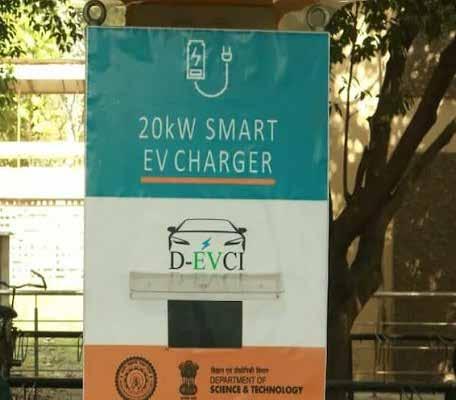
Prakash Javadekar, Minister of Environment, Forest and Climate Change, Government of India, answering a question raised in the Rajya Sabha, said that the world has accepted India’s leadership in terms of advocating measures to mitigate climate change.Javedekar added that India is the only country in the G-20 forum implementing the Paris accord commitments on renewable energy and afforestation. He also informed that India is committed to realize the aim of achieving 175 Gigawatt renewable energy by 2022.
Development of STPs in Moradabad to reduce load of pollution in Ganga
An agreement has been signed between the National Mission for Clean Ganga (NMCG), Uttar Pradesh Jal Nigam and GA Infra Private Limited-LahotiBuildcon Limited, for development of sewage treatment plants (STPs) in Moradabad. The contract for the tripartite concession agreement was awarded at a cost of `99.68 crore. The lending for this project has already been offered by the State Bank of India Capital. According to a statement released by the Ministry of Jal Shakti, Government of India, the project’s goal is to eliminate the flow of untreated sewage from the city of Moradabad into River Ganga.
PM Modi launches ‘Jal Shakti Abhiyan’
NEW DELHI: Prime Minister Narendra Modi launched the ‘Jal Shakti Abhiyan: Catch the Rain’ campaign via video conferencing on the occasion of World Water Day on March 22. A memorandum of agreement has also been signed between Gajendra Singh Shekhawat, Minister of Jal Shakti, Government of India; Chief Minister (CM) of Madhya Pradesh Shivraj Singh Chouhan; and CM of Uttar Pradesh Yogi Adityanath, to implement the Ken-Betwa Link Project.
PM Modi said during the launch that it is an essential step towards realising the dream of former Prime Minister Atal Bihari Vajpayee and benefitting millions of families in Madhya Pradesh and Uttar Pradesh. He added that the growing water crisis is increasing continuously with India’s development, and it is the responsibility of the present generation to fulfil their commitment towards the coming generation.
PM Modi also said that it is crucial to manage rainwater to decrease the dependency on groundwater, and that’s why the success of ‘Catch the Rain’ campaign is important. He added that ‘Jal Shapath’, which is organised across the country, should become the pledge of every individual and if people change their nature positively towards water, nature will also support humanity. PM Modi mentioned that 1.5 years ago, just 3.5 crore families out of the total 19 crore families in our country had piped drinking water but after the launch of ‘Jal Jeevan Mission’, about 4 crore new families have been provided piped drinking water connections. He also pointed out that the government is working seriously towards water testing. Moreover, during the lockdown period itself, about 4.5 lakh women were trained for water testing and 5 women are trained in every village for water testing, he added.
Piped water supply on the rise in Gujarat cities: Study
AHMEDABAD: A study carried out by the Centre for Water and Sanitation at CEPT University found that a majority of the cities in Gujarat are supplied piped water and now there is a need to improve water management in these cities. The study also suggested the use of water audit and metered connections to monitor the usage effectively.
The study was titled ‘Urban drinking water security in Gujarat’ and was conducted by Meera Mehta, Dinesh Mehta and Jaladhi Vavaliya. The report was published in the Journal of Social and Economic Development. On the occasion of World Water Day on March 22, experts said that the state has decreased the dependence on groundwater as the reach of Narmada canal has been extended at a cost of about `47,000 crore. This has improved water supply in Gujarat and Saurashtra regions and hence improved economic growth.
The study said that as the Government of Gujarat has now achieved water security in urban areas, now the aim is to focus on improving water management. It also added that the smaller cities with a less-than-required water supply need to be provided more water and the amount of non-revenue water (NRW) should also be brought down as more water does not necessarily convert to higher level of services to the consumers.
The researchers found that the prime reason in analysing water consumption is the lack of metres which is a necessity if the state aims to provide 24*7 water supply. They also added that the total quantum of water supply in the cities has increased but the duration of supply and number of days of water supply has not changed significantly.

Bengaluru, Shimla top Ease of Living Index
Bengaluru tops the list of most liveable cities in India in the Government of India’s ‘Ease of Living Index’ released on March 4. Bengaluru is followed by Pune, Ahmedabad, Chennai, Surat, Navi Mumbai, Coimbatore, Vadodra, Indore and Greater Mumbai. Among the cities with more than 1 million population, Delhi stands at the 13th spot, where as Srinagar is at the bottom. The index was released by Hardeep Singh Puri, Minister of Housing and Urban Affairs, Government of India. Shimla topped the list of cities with population less than a million, followed by Kakinada, Salem, Vellore, Gandhinagar, Gurugram, Davangere and Tiruchirapalli.
1.11 crore houses licensed under PMAY-U: MoHUA
The Ministry of Housing and Urban Affairs has said that so far, 1.11 crore houses have been authorised under the Pradhan Mantri Awas Yojana-Urban. Of these, 73 lakh have been approved and over 43 lakh have already been delivered. Hardeep Singh Puri, Minister of Housing and Urban Affairs, said that the Ministry is dedicated to Prime Minister Narendra Modi’s vision to provide ‘Housing for All’ by 2022. Puri stressed that access to better housing had dynamic inter-linking impacts on the lives of women, their children, and the entire family.
Super Specialty Hospital in SAIL to meet needs of three states
ROURKELA: President Ram Nath Kovind inaugurated a Super Specialty Hospital at the Rourkela Steel Plant on March 21. In his address, President Kovind noted that the Rourkela Steel Plant has been visibly sensitive in this regard and has made conscious efforts to bring changes not only in industrial activities but also in the fields of healthcare, education, culture, sports, etc through the years. He said, “Till now, this area was deprived of a super specialty medical facility,” and how the Ispat General Hospital, for which the Prime Minister had laid the foundation about six years ago, is ready to serve the people of the region. Stressing on the significance of this Hospital, he said that it would not only cater the super specialty medical needs of Odisha but also of the adjoining areas of Jharkhand and Chhattisgarh.
President Kovind mentioned that good governance consists of two pillars – education and healthcare. But in the recent past, he said, the importance of healthcare has received worldwide attention as the COVID-19 pandemic has shown its macabre form across the world. “In this difficult time, the country’s medical fraternity has fought an extraordinary battle against an invisible and unknown enemy.” He noted that in Rourkela and its adjoining areas, the medical teams of the Steel Authority of India Limited have done commendable work of protecting people by their tireless efforts, and added that the nation would always be indebted to them.
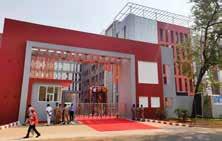
Over 12 million displaced due to climate related disasters
NEW DELHI: A new report by The International Federation of Red Cross and Red Crescent Societies (IFRC) revealed that 12.6 million people have been internally displaced worldwide in the last six months due to climate and weather-related disasters. The report named ‘Responding to Disasters and Displacement in a Changing Climate’ was released on March 16. Helen Brunt, Asia Pacific Migration and Displacement Coordinator, IFRC, said that in the last six months, 80 per cent of the 12.6 million displaced forcefully are due to disasters which were triggered by climate and weather disruptions. She added that Asia suffers more than any other region, which is affecting some of the poorest communities who are already suffering due to economic and social impacts of the COVID-19 pandemic. The report shows that when the people are displaced due to disaster and it destroys villages and entire neighbourhoods, they face long-term housing, land and property issues. Women and children are also at increased risks of violence due to climate-related displacement, the report mentioned. Brunt said that the world is seeing an alarming trend of people affected by extreme weather conditions such as Typhoon Goni, world’s most ferocious storm, that hit land last year. She added that investment in long-term solutions is urgently required before the disaster forces more people away from their homes.

Ranjit Chavan elected Co-President of UCLG ASPAC again
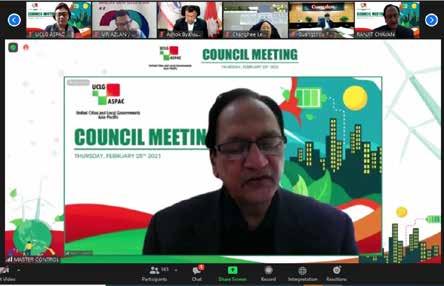
JAKARTA (INDONESIA): Ranjit S Chavan, President of All India Institute of Local Self-Government and former Mayor of Vadodara, has been re-elected as the Co-President of United Cities and Local Governments Asia Pacific (UCLG ASPAC) during the Deferred Council Meeting that was virtually hosted from Jakarta, Indonesia.
In his address, Chavan said, “I believe there is an even greater obligation on me, after being re-elected, to work more vigorously for local governments. Since increasing urbanization and evolving challenges are growing together fast, keeping this in mind, UCLG ASPAC with its Manifesto Development Committee has come out with a Manifesto that will guide all of us to work for a common goal. It will help us in measuring our progress against the goals set. I am privileged that AIILSG was part of the committee that developed the manifesto after a series of discussions.” He added that the COVID-19 pandemic has brought so many changes and challenges to our working lives. The ongoing Pandemic has taught us to focus on improving health services and infra. All of us have to work together to find suitable solutions for cities. And, I am sure, together we can, and we will.
He also congratulated the newly elected President of UCLG ASPAC Ashok Kumar Byanju (Shrestha), who is also the President of Municipal Association of Nepal (MuAN) and Mayor of Dhulikhel Municipality and bid adieu to the departing President by wishing her all the best for future endeavours. AIILSG is the oldest member of IULA (original body). IULA had set up the International Union of Local Authorities – Asia Pacific section in Sept. 1989.
UCLG ASPAC also released the second manifesto that was developed by the Manifesto 20212025 Development Committee to guide the Organisation for the next period of 2021-2025. The committee members were from the four subregions of UCLG ASPAC. It was unanimously accepted for immediate implementation while the official adoption will happen during the UCLG ASPAC Congress scheduled for August/September 2021 in Zhengzhou. Earlier, the meeting was supposed to take in April 2021 but was postponed due to COVID-19 restrictions.
The Draft of the UCLG ASPAC’s Manifesto 2021-2025 is continuing the four Key Strategies of the first Manifesto 2015-2020, in addition to adding a new Strategy to address COVID-19 recovery and postCOVID-19 regeneration. The outcome Strategies include: 1) Promote Effective Democratic SelfGovernment and Good Governance; 2) Equal and Adequate Basic Services to Improve Quality of Life and City Resilience. 3) Put Global/Regional Agendas and National Commitments into Effective Local Implementation. 4) Aggregate, elevate and advocate for local voices and issues to national, regional and global levels. 5) Empower and Enable COVID-19 Recovery and Resilience for Local Governments and Cities. 6) Strengthen performance and service delivery of the Secretariat to achieve. A work plan of the organization was also accepted and the Executive Bureau also approved the inclusion of Palembang as a new member.
The Meeting was attended by over 100 representatives of Local Governments (LGs) and Local Government Associations (LGAS) from various countries of the Asia Pacific region including India, China, Bangladesh, Nepal, Sri Lanka, Pakistan, Philippines, South Korea, Japan among many others.
Local sources are behind surge in pollution in east, north Delhi
Centre for Science and Environment, on March 3, released a winter analysis of air quality in Delhi and NCR as compared to the previous year. The report showed that east and north Delhi recorded the worst levels of (Particulate Matter) PM 2.5, whereas the air quality monitoring stations in West Delhi were ‘cleaner’. Road dust, open garbage burning and vehicular emissions on internal roads were the primary causes which worsened the air quality in east and north Delhi, residents of the area said. Open burning and abandoned old vehicles have become the prime reasons of pollution in east Delhi.
AAP wins four seats out of five in MCD bypolls, Congress gets one
The Aam Aadmi Party won four seats in Municipal Corporation of Delhi (MCD) bye-polls held on March 4. Chief Minister Arvind Kejriwal congratulated everybody and said that people have voted in the name of work. The AAP won Rohini-C (Ward no 32N), Trilokpuri (Ward No 02E), Kalyanpuri (Ward 008E) and Shalimar Bagh North (Ward no 62N). Zubair Ahmad Chaudhary bagged the seat of Chauhan Banger by 10,642 votes. The result of these bypolls were being closely observed as they indicate the mood of voters and is likely to have an impact on the Delhi civic body elections which are due to be held in 2022.
Northeast has country’s biggest carbon stock: Report
GUWAHATI: The northeast (NE) region is India’s largest carbon sink, accounting for 28 per cent of the country’s approximated total of 7124 million tonnes, revealed the India State of Forest Report 2019 released on March 8.
Arunachal Pradesh individually, where the forest covers more than 60 per cent of the state’s geographical area, has the leading carbon stock of 1051 million tonnes among all states and union territories in the country. The states following Arunachal Pradesh are Madhya Pradesh – 588.73 million tonnes, Chhattisgarh – 480.25 million tonnes, and Maharashtra – 440.51 million tonnes.
The per hectare carbon stock among different states and union territories shows that Sikkim has the maximum per hectare carbon stock of 171.04 tonnes per hectare, followed by the Andaman and Nicobar Islands – 167.09 tonnes per hectare, Jammu & Kashmir – 165.25 tonnes per hectare, Himachal Pradesh- 163.51 tonnes per hectare, and Arunachal Pradesh – 157.65 tonnes per hectare.
The carbon stock for 2019 in India’s forests has been estimated at 7124.6 million tonnes, which is an increase of 42.6 million tonnes as compared to the estimates of the previous evaluation. India aims of creating an additional sink of 2.5 to 3 billion tonnes of carbon dioxide equivalent through additional forest and tree cover in the country by 2030.
BENGALURU: BS Yediyurappa, Chief Minister of Karnataka, announced that the government has decided to allocate `7795 crore for the development of Bengaluru city in Karnataka’s Budget 2021-22. Mentioning that Bengaluru is an extremely fastgrowing city, he said that his government has decided to give priority to provide required infrastructural facilities and excellent quality of life. He said that it was a matter of pride for the state that Bengaluru topped the Ease of Living Index released by the Ministry of Housing and Urban Affairs, Government of India.
Yediyurappa informed that the state government is currently implementing the K-100 project to develop Koramangala Valley as a tourist attraction at an expenditure of `169 crore. In the budget, the government has also proposed converting the land belonging to Mysore Lamps Works Limited in Malleshwaram, Bengaluru to Experience Bengaluru Centre, which will depict the culture of Karnataka. He also mentioned another proposal put forward by the government on the development of Tree Parks in NGEF, Byappanahalli, along with three other locations. The CM also mentioned ongoing construction of a 65-km long and 100-m wide peripheral ring road to reduce traffic congestion around the city of Bengaluru. He said that the Government of Karnataka is awaiting approval from the Government of India on the construction of a 58.2 km long Outer Ring Road in Bengaluru, the cost of which is being estimated at `14,788 crore. He added that actions to rejuvenate and upgrade 248 million litres per day capacity of sewage treatment plant of Kormangala Valley has been initiated in collaboration with the Bruhat Bengaluru Mahanagara Palike through Bengaluru Water Supply and Sewerage Board, at an estimated expenditure of `450 crores.

Karnataka allocated `7.7K cr for Bengaluru’s development
USA and Biological E collaborate to increase vaccine development
NEW DELHI: The United States International Development Finance Corporation (DFC) has announced its decision to support efforts of Biological E, an Indian manufacturer, to produce one billion doses of COVID-19 vaccines. The vaccines will be produced with attainment of stringent regulatory authorization (SRA) and Emergency Use listing of the World Health Organisation (WHO). The announcement is a part of an initiative named Global Health and Prosperity launched by the DFC under which it is working to increase manufacturing, production, and distribution capacity for vaccines, including the vaccines for COVID-19. The American Administration, under the leadership of Biden and Harris, highlighted this announcement during the Quad Summit held virtually. At the summit, leaders from the United States of America, Australia, India, and Japan also announced a marker partnership between them to further accelerate the fight against COVID-19. DFC said in a statement that its assistance and financing would help Biological E’s plan to vaccinate as many people in the world as possible in the shortest amount of time. The release also mentioned that Biological E is a women-run and women-operated business, which will advance DFC’s 2X Women’s Initiative to promote global gender equity. David Marchick, Chief Operating Officer at DFC, commented that expanding vaccine manufacturing, especially the COVID-19 vaccine and boosters, will increase vaccination rates and ensure the protection of communities worldwide.
NEW DELHI: A report released by the World Bank, in collaboration with UNESCO’s Global Education Monitoring, established that the current levels of government spending on education in low- and lower-middle income countries fall short of that required to achieve the Sustainable Development Goals. It said that education budgets were cut by 65 per cent in these countries after the onset of the COVID-19 pandemic, while only 33 per cent of high and upper-middle income countries did so.
The report informed that the sample represents about 54 per cent of the world’s school and university aged population. According to the report, countries including India, Argentina, Brazil, Pakistan, Egypt, Myanmar, Russia, and Nigeria have education shares below 10 per cent and therefore are likely to have other main financing sources besides budget assigned by their respective central governments. It said that it is unclear whether these countries, which have seen a decline in their education budget, will be able to cover these costs increased during the pandemic in conjunction with the regular increases in funding needed to support school-going and growing population. The report stated that making a riposte to the COVID-19 crisis will require additional spending in order to have schools compliant with the necessary measures to control the spread of SARSCoV-2 and to fund programs to make up for the losses students experienced in learning while schools were closed.
Countries including India slashed their education budget post-pandemic: Report
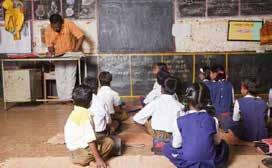
All Delhi government vehicles to switch to EV within six months
An order from Chief Minister Arvind Kejriwal said that all the vehicles of the Government of Delhi will be replaced by electric vehicles (EVs) within the next six months. Any department or autonomous body of the Delhi government can hire an EV for the first time with the permission of the Department of Finance. The Department of Transport will oversee the switch to EVs and all the departments will have to submit a report to the transport department on how the transition of vehicles to EVs is going on, identify the gaps and give some suggestions to complete the target within six months.
Rajasthan to give `5 lakh
insurance benefit to every family
Rajasthan Chief Minister Ashok Gehlot, on February 24, assured that every family will get an insurance benefit of `5 lakh under the Universal Healthcare Scheme. He added that people who are covered under Ayushman Bharat Mahatma Gandhi Rajasthan Swasthya Bima Yojana can avail the benefits of this scheme for free, including contract workers, small and marginal farmers. CM Gehlot, in his speech during the Budget session 2021, said that the state government will also introduce a ‘Right to Health’ bill which will provide preventive and curative cure to the people.
Delhi believes new rules good for traffic’s health
NEW DELHI: Team Urban Update conducted a survey on ‘Adherence to Traffic Regulations’ in the National Capital. When asked if drivers in Delhi have started adhering to traffic rules after installation of surveillance cameras at various spots, 63.6 per cent of the respondents said yes, while 24.2 per cent of them believe that cameras have not resulted in any improvement. To the question whether drivers tend to stop behind the stop line at red light, 48.5 per cent of the respondents replied to it with a yes and 48.5 per cent said no. This puts into perspective that Delhi drivers continue to neglect the rule of stopping behind the stop line, even after a fine has been put in place for this offense.
India claims the number one spot when it comes to road accident fatalities in the world, and one of the biggest reasons for road accidents in India is that people fail to follow the traffic rules, including wearing seat belt or helmet, stopping at signals, etc., which are designed only to help drivers stay in control and stay safe while driving. Under the amended Motor Vehicles Act implemented in September 2019, hefty fines have been introduced on motorists. The Ministry of Road Transport and Highways has said that it has enhanced penalties on offences where no penalty was previously specified, introduced several new penalties and made penalties on offences such as driving under influence of alcohol, speeding, uninsured vehicles and lacking documentation, much stricter. Similarly, there are now stricter penalties on drivers and passengers not wearing seat belts, carrying an excess number of passengers, minors driving cars and incorrectly seating children in a vehicle. New Delhi is one of the few states to implement the new rules.
Prashant Gautam, Deputy Commissioner, Western Range Traffic Police, Delhi, said in a very recent notification, “It has been observed that a very high number of two-wheeler riders have been driving with the rearview mirrors removed across the roads of Delhi. Driving without a rear-view mirror is not only irresponsible, but also dangerous since it blocks a significant field of view of the driver, causing collisions with the faster moving vehicles from behind.” Therefore, the Delhi traffic police started a special drive against riders driving without side-/rear-view mirrors.
According to the survey report, 84.8 per cent of the respondents found e-challans to be more effective than previously existing challan processes, and 78.8 per cent of the respondents said that they believe that these new traffic regulations, with increased fines, surveillance cameras, and e-challans, will be beneficial in making Delhi’s roads safer in the long term. The Supreme Court of India had recently issued an order directing the set-up of a special lane for emergency vehicles, to which 84.8 per cent of the respondents said that it is a much needed step. However, 3 per cent believe that cost of infrastructure will be an extra burden on middle class, and instead it is better to emphasise on awareness about these issues.
When asked about areas where both the Delhi government and the Delhi Traffic Police can improve upon to make Delhi roads safer, various kinds of responses were received, including, making sure that all the street lights function properly, ensuring women safety, and reducing road crimes like robbery.
Have drivers started adhering to traffic rules after installation of CCTV cameras?
12.10% Do you think drivers in Delhi tend to stop behind the ‘Stop Line’?
3%
24.20% 63.60%
48.50% 48.50%
Do you find e-challans to be effective? Do you think the new traffic regulations and increased fines will be beneficial?
15.20%12.10%
24.20%
84.80% 63.60%
YES NO HAVEN'T NOTICED










